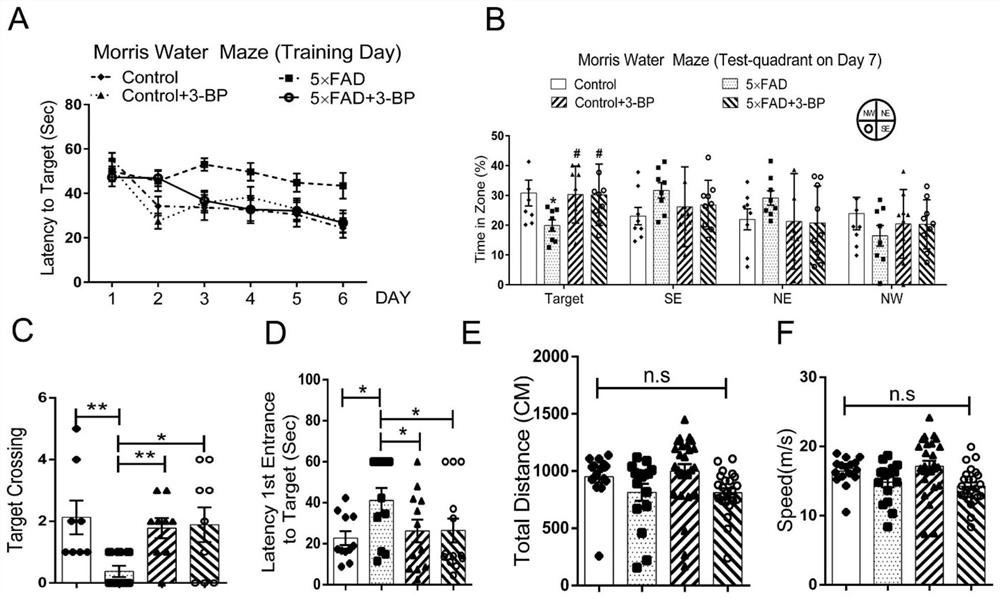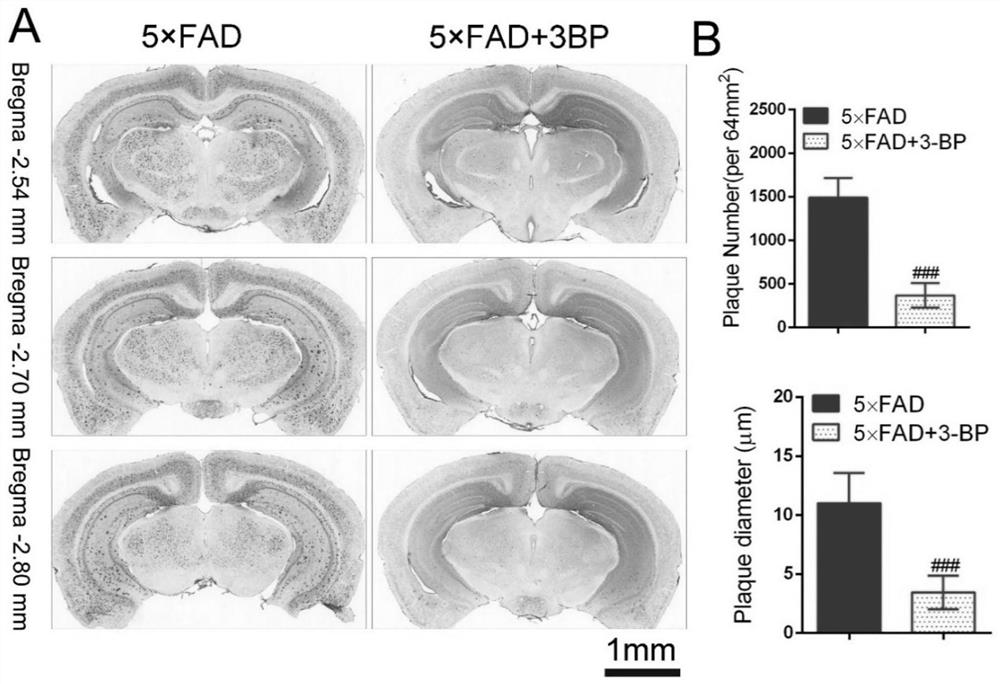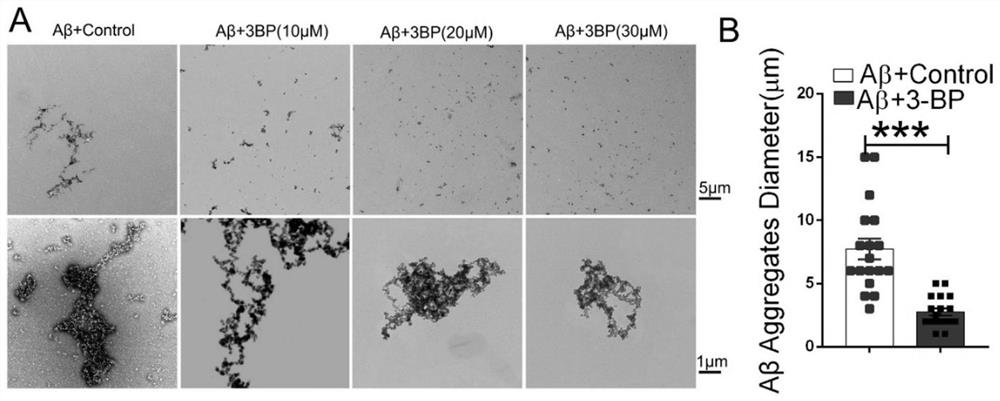Use of hexokinase inhibitors in the preparation of drugs for preventing and/or treating Alzheimer's disease
A technology for Alzheimer's disease and hexokinase, which is applied in the field of hexokinase inhibitors and preparation of drugs for the prevention and/or treatment of Alzheimer's disease, and can solve problems such as the lack of content of lonidamine
- Summary
- Abstract
- Description
- Claims
- Application Information
AI Technical Summary
Problems solved by technology
Method used
Image
Examples
Embodiment 1
[0046] Embodiment 1: 3-BP improves the cognitive ability of Alzheimer's disease model mice
[0047] (1) Background and grouping of experimental mice
[0048] 5×FAD transgenic mice are classic AD transgenic mice, 5×FAD transgenic mice overexpress mutations in two humanized and familial Alzheimer’s disease-associated genes APP and PS1, the expression of these two genes is controlled by Initiated by the mouse prion protein promoter. The PS1-dE9 mutation of the human presenilin gene is caused by the deletion of the ninth exon of the gene, which can lead to early-onset Alzheimer's disease. Control mice were derived from littermates of wild-type mice. Nine-month-old 5×FAD mice and control mice were used in the experiment.
[0049] The experimental groups were divided into four groups: wild type mice were given control reagent group (WT), 5×FAD mice were given control reagent group (5xFAD), wild mice were given 3-BP group (WT+3-BP), 5×FAD mice were given 3-BP group (WT+3-BP), 5× ...
Embodiment 2
[0054] Example 2: Immunohistochemistry and immunofluorescence staining to detect the scavenging effect of 3-BP on Aβ in the brain of Alzheimer's disease model mice
[0055] (1) Stereotaxic intracerebroventricular injection of mouse brain
[0056] 5×FAD mice were intraperitoneally injected with 5% chloral hydrate (0.1mL / 15g). After complete anesthesia, the head hair was shaved and fixed on a brain stereotaxic instrument. Disinfect with povidone iodine, cut the scalp, find the bregma and bregma under the microscope for leveling and positioning, drill a small hole (x±1.0mm, y-0.4mm) at the ventricle with a 0.5mm drill bit, and remove bone debris , slowly insert the microsyringe into the lateral ventricle, descend to the appropriate depth coordinate (z2.2mm) and inject (3-BP, 2.5μL, 0.5mg / kg). After the injection, stop the needle for ten minutes, withdraw the needle slowly, and suture the skin of the mouse head.
[0057] (2) Tissue fixed section
[0058] After one week of intra...
Embodiment 3
[0062] Example 3: Observation of the Effect of 3-BP on the Aβ Aggregation State in Vitro by Electron Microscopy
[0063] Prepare Aβ1-42 as follows: Dilute the polypeptide dissolved in DMSO (5 mM) to 100 μM with phenol-free cold F-12 cell culture medium (Gibco), sonicate for 10 min to make freshly used oligomeric Aβ1-42 . Some peptides were cultured at 22°C and 220rpm for 72 hours to age them in vitro, and different concentrations of 3-BP were added during this process. Afterwards, culture at 4°C for 24 hours, and centrifuge at 16,000×g for 15 minutes. The collected supernatant contains Aβ1-42 aggregates, which are observed and analyzed by transmission electron microscope. Depend on image 3 It can be seen that when 3-BP is added, the aggregation state of Aβ becomes loose and the volume of multimer becomes smaller with the increase of the concentration of 3-BP added. This experiment shows that 3-BP can reduce Aβ aggregation and form smaller aggregates, which facilitates the ...
PUM
 Login to View More
Login to View More Abstract
Description
Claims
Application Information
 Login to View More
Login to View More - R&D
- Intellectual Property
- Life Sciences
- Materials
- Tech Scout
- Unparalleled Data Quality
- Higher Quality Content
- 60% Fewer Hallucinations
Browse by: Latest US Patents, China's latest patents, Technical Efficacy Thesaurus, Application Domain, Technology Topic, Popular Technical Reports.
© 2025 PatSnap. All rights reserved.Legal|Privacy policy|Modern Slavery Act Transparency Statement|Sitemap|About US| Contact US: help@patsnap.com



